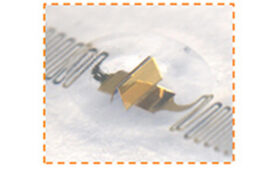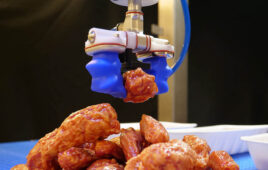Most of the interest in soft robotics has been in grippers and actuators, but relatively little attention has been paid to the development of flexible computational mechanisms. By embedding low-cost and easily fabricated soft computers into robotic systems, scientists at the University of Bristol in the U.K. have created various soft machines that functioned autonomously without the use of conventional and complex electronics.
Many soft robotic systems still use rigid components, such as tethers, that limit their range of capabilities. The development of “smart” soft materials is critical for engineering the next generation of fully soft robots that can better adapt to varying environments, claimed the researchers.
Such low-cost, embedded soft computers could enable robots to move beyond stimulus-response relationships and toward mimicking the intelligent behaviors seen in biological systems, they said. The research was published in Science Robotics last week.
Soft computers demonstrate functions
Martin Garrad and his colleagues at the University of Bristol developed soft matter computers (SMCs) that could be integrated into soft actuators, sensors, or robots. These SMCs demonstrated a range of fundamental computational functions.
Inspired by the vascular system, the SMC consists of networks of fluid-carrying tubes embedded with electrodes, said the University of Bristol team. Similar to how hormones released into the bloodstream, triggering local tissue responses when detected by the appropriate receptor, the SMC encodes information into its fluid-containing structure and sends this information through a soft robotic body.
When this information is detected by receptors embedded into the network, the movement of conductive fluid is converted into an electrical output that triggers an action, the scientists said.
The researchers demonstrated the soft computer system in three different robots. The first was a Softworm robot that was controlled by an SMC that generated the control signals necessary for three distinct gaits.
The second was a soft gripper was given a set of reflexes that could be programmed by adjusting the parameters of the CFR.
The third demonstration of soft computers was of a two–degree-of-freedom bending actuator that switched between three distinct behaviors by varying only one input parameter.

The Robot Report has launched the Healthcare Robotics Engineering Forum, which will be on Dec. 9-10 in Santa Clara, Calif. The conference and expo focuses on improving the design, development and manufacture of next-generation healthcare robots. Learn more about the Healthcare Robotics Engineering Forum.





Tell Us What You Think!